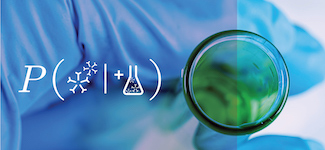How much faith can we place in coronavirus antibody tests?
In the US, the Food and Drug Administration has approved use of one test* that looks for the presence of antibodies to SARS-CoV-2, the virus that causes Covid-19, and there are more tests in the pipeline. But there are meaningful challenges to interpreting the results of these tests. On April 28, Granta Magazine published an essay, “How much faith can we place in coronavirus antibody tests,” by HRDAG’s executive director, Megan Price, Morgan Agnew, and David Peters that helps to answer this question: Given a positive test result, what is the probability that an individual has antibodies?
The authors explain the terms “sensitivity” and “specificity,” and how the sensitivity and specificity rates matter when interpreting results. From the essay: “Sensitivity asks: What percentage of people taking the test correctly identify as positive? Specificity asks: What percentage of people correctly identify as negative? It’s important to keep in mind that an antibody test result for coronavirus can fail in both ways – a test can indicate that you have immunity when you don’t, and it can indicate that you have no immunity when you do.”
The authors also explain how and why so much of the interpretation hinges on knowing a population’s infection rate, which is still unclear in the US. From the essay:
“Simply put, if someone gets a positive antibody test, of the best kind currently available, and the true recovered population is about 1%, there is only a 49% chance that the person will actually have antibodies. You wouldn’t know very much more than you did before you took the test. What happens if the underlying prevalence is higher? Take the same antibody test and apply it to the other extreme of the guesses, where 10% of the population is recovered … In that case, if you took the antibody test and tested positive, you’d have a 97% chance of actually having the antibodies.”
* Antibody tests, also known as serology tests or immunoassays, are done by drawing blood, and they detect antibodies or antigens to the virus, but not the virus itself. They’re used to indicate past infections. These should not be confused with PCR tests, also known as swab tests, which detect the virus’s RNA in a person’s nose, and can indicate that a patient is currently infected with the virus.
Acknowledgments
Support for this project was provided by grants from the John D. and Catherine T. MacArthur Foundation, the Oak Foundation, and the Open Society Foundation. (For more information about HRDAG’s supporters, please see our Funding page.)
Find more articles about HRDAG research and resources regarding Covid-19.

